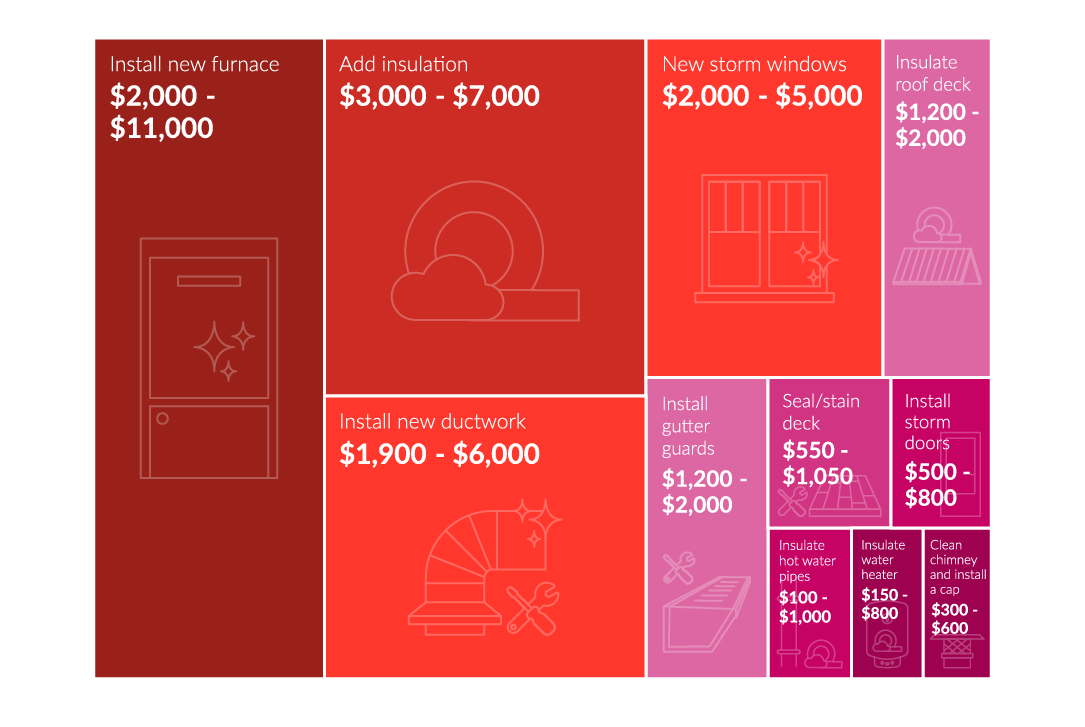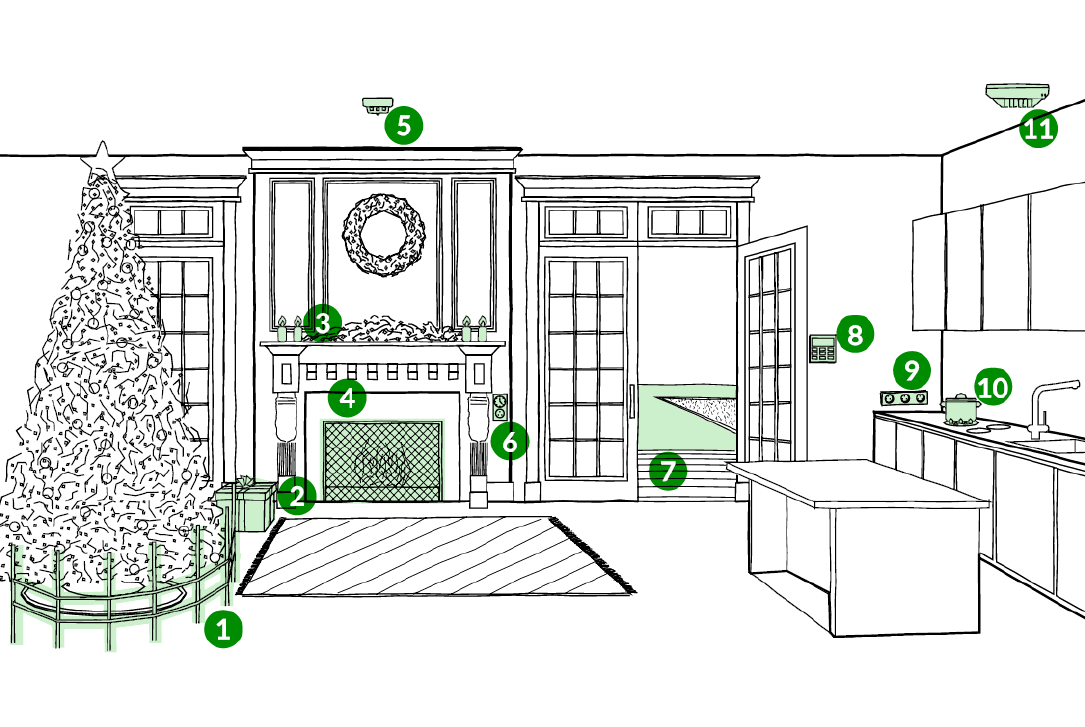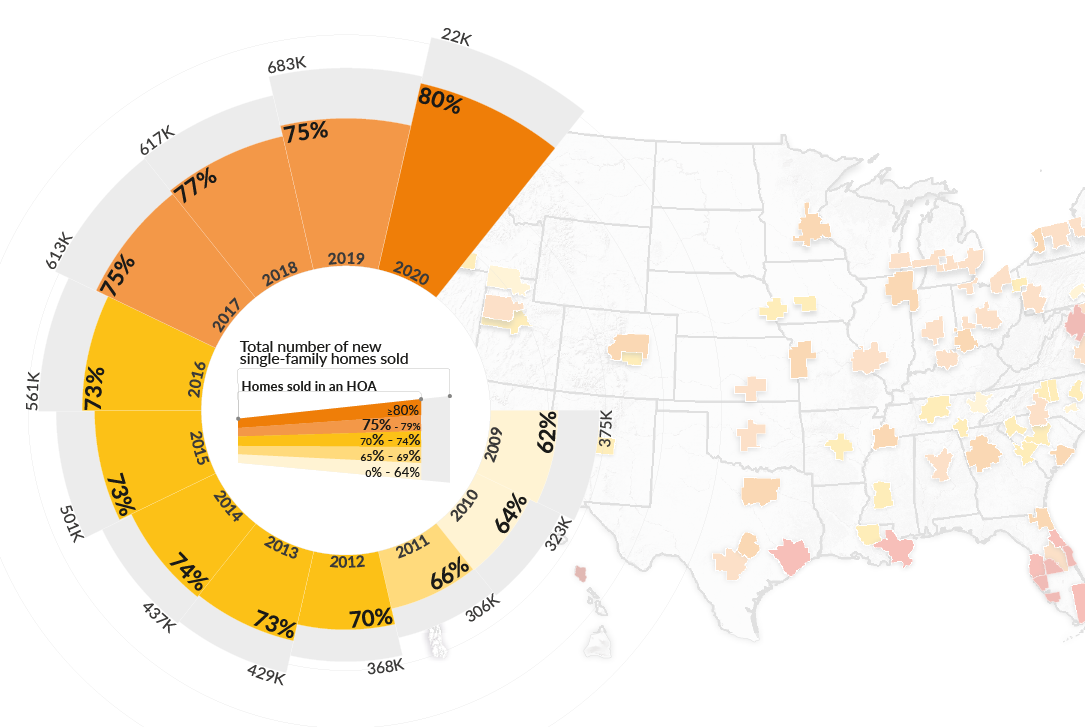Having a healthy home is often overlooked when it comes to living a healthy life. According to the National Center for Healthy Housing roughly 45 million homes in metropolitan areas of the U.S. have one or more health hazards. In light of the recent pandemic people have become even more aware of the importance of living in a home which keeps them safe and healthy.
A healthy home is a space that is designed, built, and maintained to support our health. There are many things that you can do to help create a healthy home, from improving the air quality to removing hazardous aspects such as toxins from the materials you build with.
In a recent report on Single-Family Home Trends we took a look at which are homeowners’ biggest concerns regarding healthy homes in new single-family home builds. We also asked Amanda Reddy, from the National Center for Healthy Housing, and Bea Spolidoro, from Fisher ARCHitecture, about the influence of such an unprecedented year in what having a healthy home means for US homeowners, which hazards are most ignored by homeowners in their homes, and how they can create a healthy home.
What Is a Healthy Home?
A healthy home is defined as a space where you can be safe, have privacy for yourself and your family, and that has been built or designed to help maintain and support your health. Starting out with the basics means that your home will have clean air and water. It will be free of toxins, pests, and contaminants that could be harmful to your health. These issues may have natural causes, and need to be countered or they may be introduced through materials that can contain harmful chemicals or volatile organic compounds (VOCs).
There are several ways that homeowners can eliminate these issues and develop a healthier environment in which to live. This in turn can help result in a home that is not only safe, but also where people can thrive.
What Are Homeowners’ Biggest Healthy Home Concerns?
Not all homeowners will have the same worries when it comes to the health hazards their home’s possess. For example, Amanda Reddy, Executive Director of the National Center for Healthy Housing states that, “A homeowner’s biggest healthy housing concern will depend on a combination of factors—where the home is located, how it was designed and constructed, how well it has been maintained, who lives in the home, and how the people in the household interact with their home environment.” As well as this, the extent to which people are concerned about certain issues can also vary.
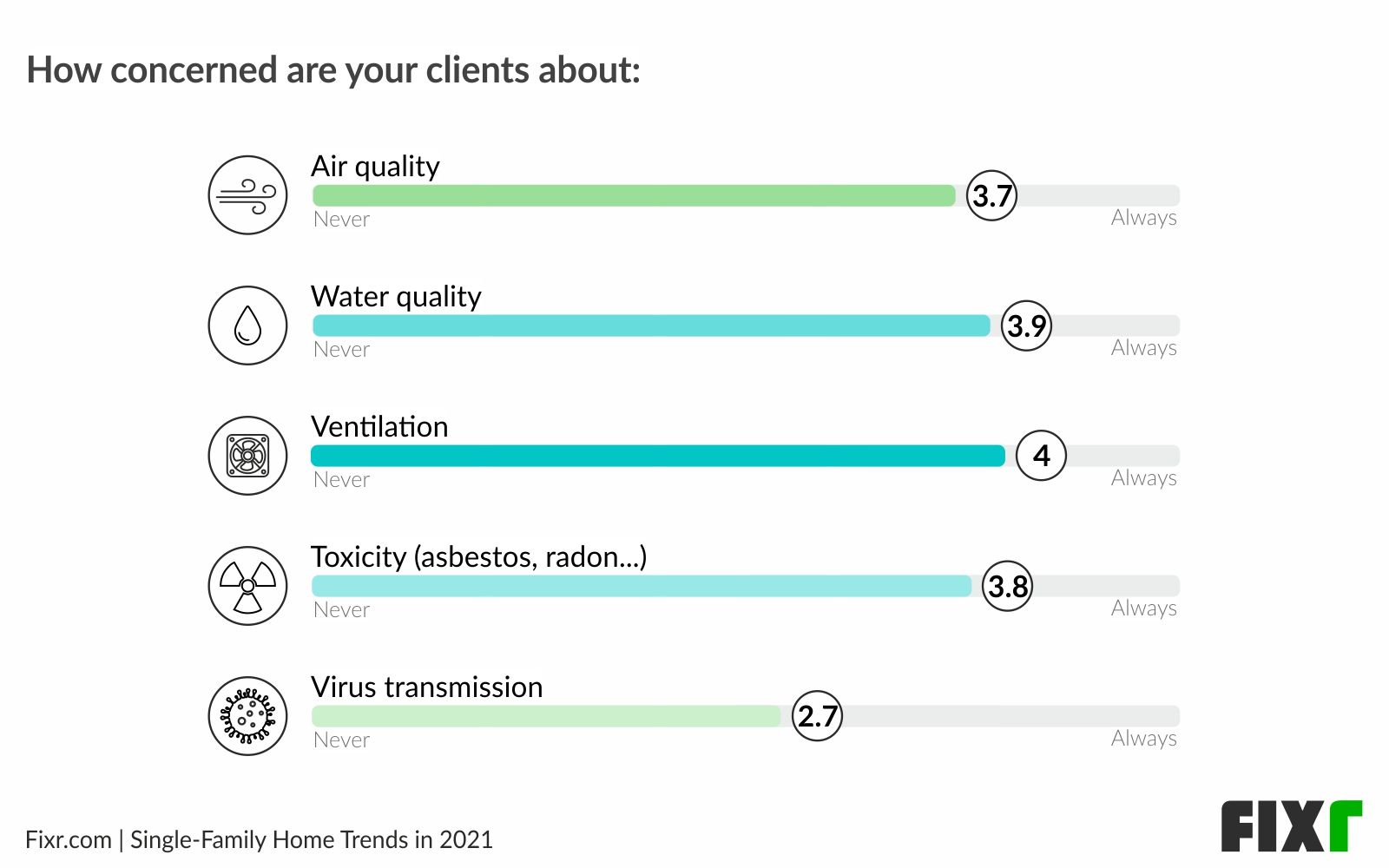
There are many different areas in the home that can be changed, modified, or built to help create a healthy space. Experts were asked how high their clients ranked several of these areas. Results were fairly close for several of them, with ventilation ranking the highest at 4, followed by water quality at 3.9, toxicity at 3.8, and air quality at 3.7.
Many of these things are interrelated, so it does stand to reason that being concerned about one area would make you concerned about others. Ventilation can help improve air quality, for example, while toxicity can be present in both the air and in the water. By treating one area, therefore, you can potentially treat others, having a much larger impact on the health of your home than you may have previously realized. The same could be said for virus transmission, as viruses such as COVID-19 are known to be spread more easily with poor ventilation.
How Has the Pandemic Influenced Healthy Homes?
With many people putting an extra focus on health after 2020, it makes sense that a healthy home would be on many people’s wish list for the foreseeable future. As well as physical health, the pandemic has had an impact on many people’s mental health too. Bea Spolidoro, Principal at Fisher ARCHitecture, highlights this by saying, “After a year of pandemic and sheltering in place, mental health is at the center of the conversation in every field.” She continues, “Homes that are flexible in accommodating different schedules and circumstances are precious. Certainly, bigger homes with many extra rooms are ideal, but not always available. Regardless of the usable square footage, a home with lots of views to the outside and plenty of natural light is intrinsically a healthy home.”
Reddy points out the importance of healthy homes, including before the pandemic:
“Even before the pandemic, Americans spent an average of 70% of their time in residential environments, so the home environment has always been and will continue to be one of the most significant settings that influence our health and well-being. Over the past year, we’ve been encouraged to be safer at home; but for many Americans, staying at home meant increased exposure to unsafe housing conditions (including but not limited to exposure to lead hazards). As we face increasing pressures from climate-related events like wildfires, hurricanes, floods, and extreme heat and cold events, our home environments will continue to be an important refuge and a critical factor in our health and well-being. As a society, we need to do more to make sure everyone has access to safe and affordable housing, and individual homeowners and landlords can do their part to ensure their properties are supporting health during times of both crisis and stability.”
How Homeowners Are Improving The Air Quality in Their Homes?
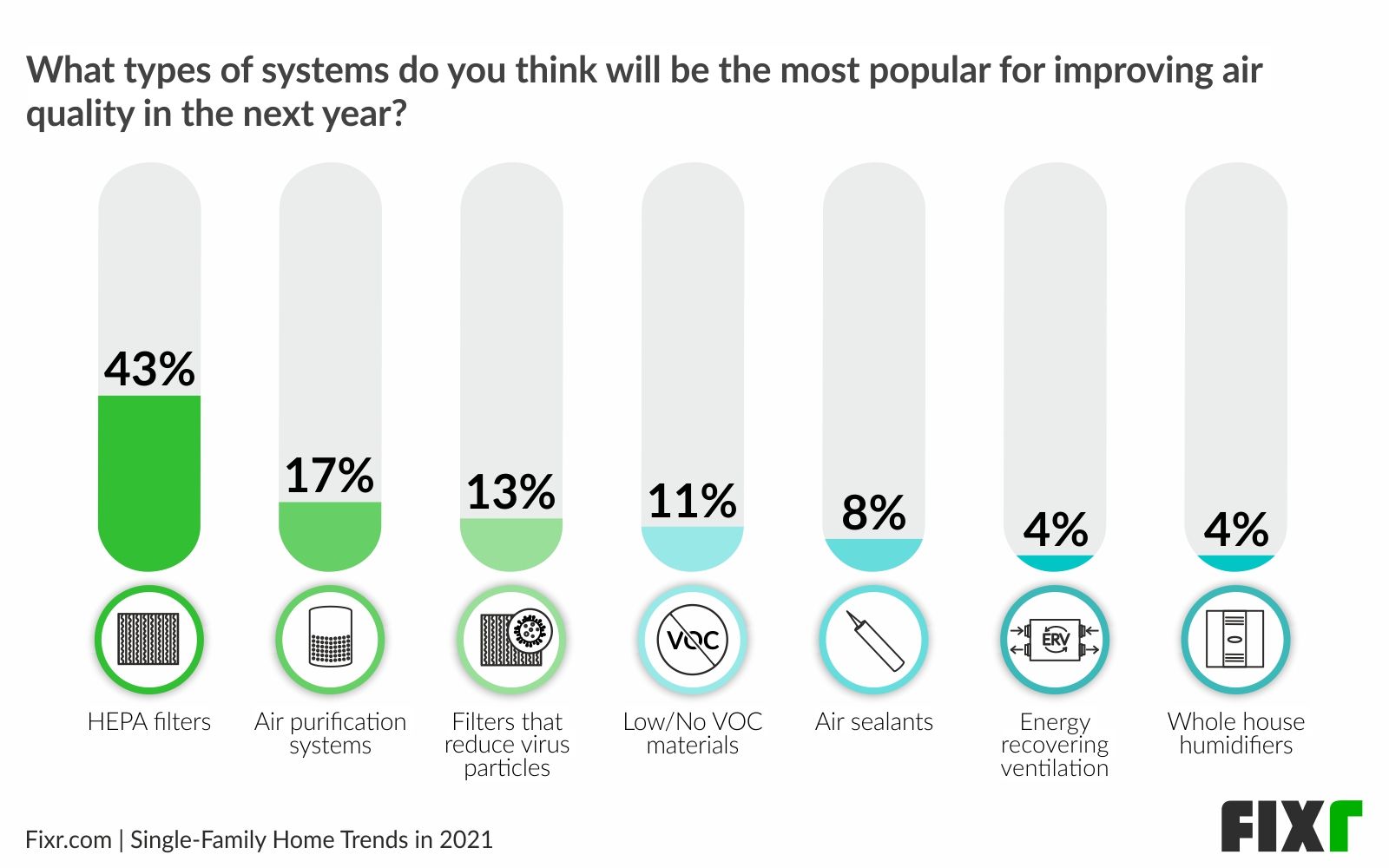
When asked what types of systems would be the most popular for improving air quality, 43% of experts responded that HEPA filters were the most popular. HEPA stands for high-efficiency, particulate-absorbing air filter. A HEPA filter can remove 99.97% of all particulates in the air, including viruses, allergens, and other contaminants. The filters work in several different ways to truly purify the air.
This means that no matter what your biggest concern is with the air in your home, a HEPA filter is probably your best chance at removing it. HEPA filters can make a big difference in the air quality of any area they are installed in. They’re also fairly well known, having been in use since World War II, with the most recent standards dating back to the 1980s. This name recognition means that many people may feel they can trust this type of filter system to help improve the air quality in their homes.
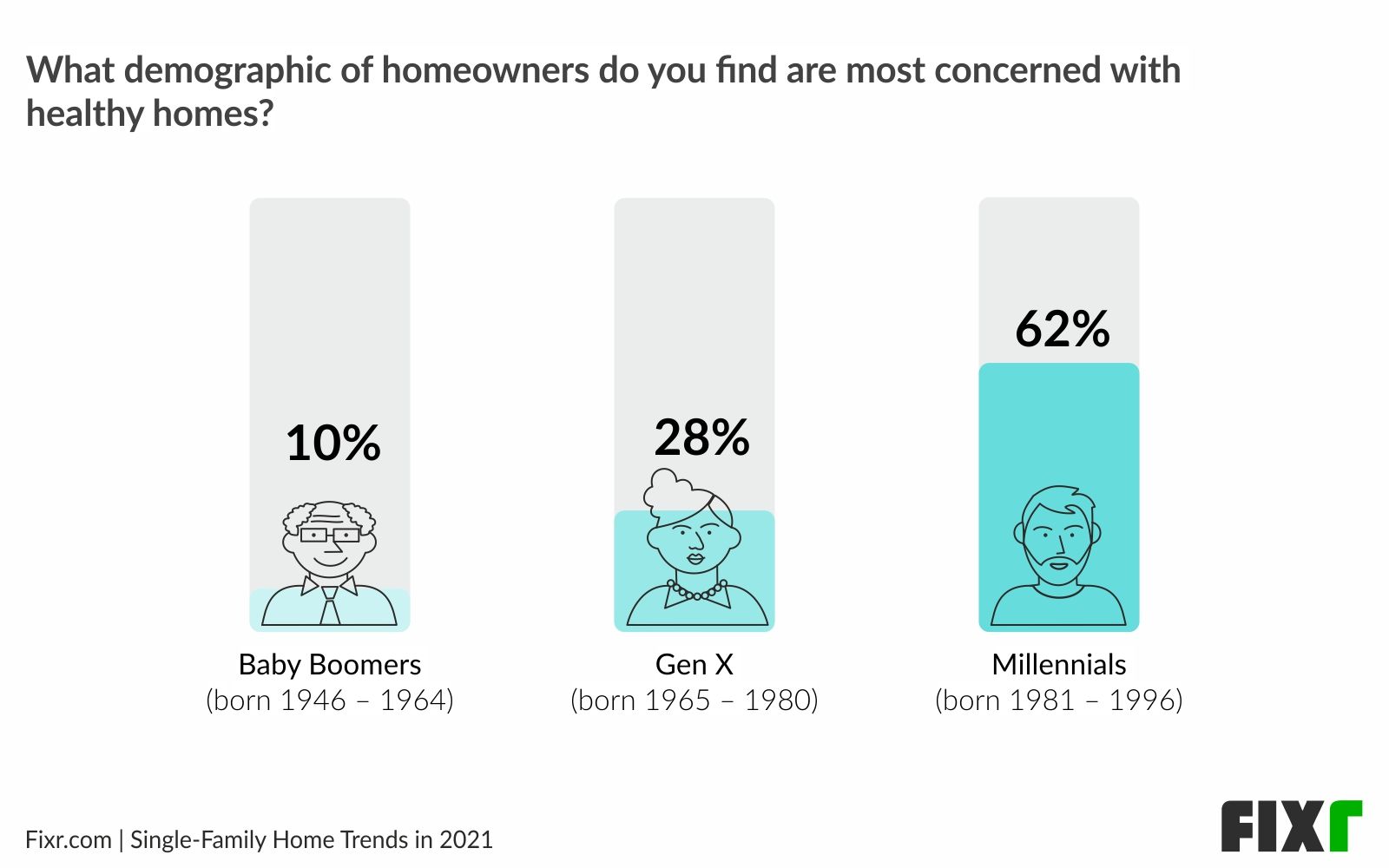
When asked which generation is most concerned about creating a healthy home, 62% answered that it’s the Millennials who are the most concerned. 28% answered Gen X, while 10% feel that Boomers are the most concerned.
Millennials tend to be amongst the most educated of any current generation, as well as more concerned about the environment. This could mean that they also have a greater awareness of what a healthy home is, as well as the ways that they can contribute to having one. Spolidoro believes, “Millennials have been exposed to such better environments for at least a decade and expect more and more healthier spaces in general, particularly at home.” Just as greater awareness about the environment has led to other changes, it could be that growing awareness of healthy homes may lead to more involvement with other generations in the future as well.
How to Create a Healthy Home
There are many ways that you can create a healthy home. It’s important to note that not every home is going to have the same needs. Older homes may have more materials that could possibly contain hazardous chemicals or contaminates, which must be contained or removed. Homes in certain climates may be more prone to issues such as mold or mildew growth, and homes in all areas may be impacted by local pests or wildlife.
Oftentimes many of these issues also go undetected, as Reddy points out, “There are many reasons why housing conditions that impact health can go unaddressed. Costs are an obvious barrier, but sometimes the problem is that people either don’t know that something is a potential issue and other times they may know that it’s an issue, but can’t see it.”
The good news, as Reddy adds, is that we know the general steps that can be taken in any home to prevent most housing-related illnesses and injuries and create a healthy home environment, regardless of its age or location.
Keep Water and Moisture Out
Moisture and water can lead to several issues including mold and mildew growth. Mold can be potentially dangerous to your health, particularly if you have allergies to it. Moisture can be prevented by ensuring your roof is in good condition, which entails regular inspections and the correct basement waterproofing. It is important that if you notice water infiltrating your home in any area to call a plumber or roofer right away to address the issue.
Clean Your Home Regularly
Regular cleaning is an important part of keeping a healthy home. A home that isn’t cleaned often can have dust and contaminate build up that can be hazardous to those with some health issues. This past year has taught us the importance of cleanliness, leading us to find out the key places where dirt and particles are accumulated so we now much better understand how essential it is to regularly clean and know the key spots that need special attention, like doorknobs, lightswitches or faucet handles. Besides this, having a lot of clutter can also make it more difficult to detect if there are issues with pests or mold, and can even become a trip hazard.
Make Sure Your Home Is Safe
There are many ways we can interpret the meaning of what it is to keep safe in a home. To begin with, we should make sure to keep poisons, guns, and potentially hazardous chemicals locked up and out of the reach of children and pets. In the same way, we should keep medications out of reach of children as well to prevent accidental ingestion. Secure loose rugs to help prevent falls, and make sure there are working locks on exterior doors to prevent break-ins. Your home should also have working smoke and carbon monoxide detectors to help inform you of potential fire.
Ventilate Properly
Good air flow and proper ventilation are crucial to a healthy home. Fresh air can aid in reducing the concentration of contaminants, can help remove and reduce moisture and potential mold, and keep areas from superheating in the summer. There are several ways to ventilate a house, some of them using natural ventilation like specific placing of windows, others mechanical, like whole house fans, and others a combination of both.
Remove Contaminants
If your home is older, you may have potentially hazardous chemicals and substances inside your paint, insulation, siding, or flooring. Lead paint and asbestos are two common materials that can pose a danger to your health.
As Spolidoro explains, “There are also dangers posed by materials and cleaning chemicals that outgas volatile organic compounds (VOCs). These chemicals are a health hazard, in particular if inhaled for long periods of time.”
Another issue that can occur in some areas is radon - a colorless, odorless gas that can come from decomposing rock beneath your home. Radon has been linked to many health problems, and it must be contained to make your home healthy to live in.
Test and have a professional analyze your home for these potential issues. Also, when carrying out renovations and construction projects, be aware of the materials being used and avoid the ones containing certain chemicals like formaldehyde.
Maintain Your Property
Make sure that you take the time to inspect your property yearly, and make repairs as needed. Damage to your home can lead to pest infestations, moisture problems, as well as potential dangers from trips and falls or other accidents. By making sure you keep your property in good condition, you can help mitigate these possible problems.
The Importance of a Healthy Home
A healthy home is one that a family can thrive in. There’s no one way to create one, as the building materials and location of each residence can have an impact on its overall health and usage. As Reddy states; “Since housing conditions depend on a variety of factors , the biggest things that a homeowner can do is to know their house and to take action to prevent problems from starting or from becoming bigger problems.” Remaining aware of the ways that you can help improve the health of your home, however, can go a long way toward determining the areas that would benefit your home the most, making it possible for a healthier future.


